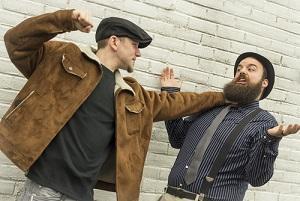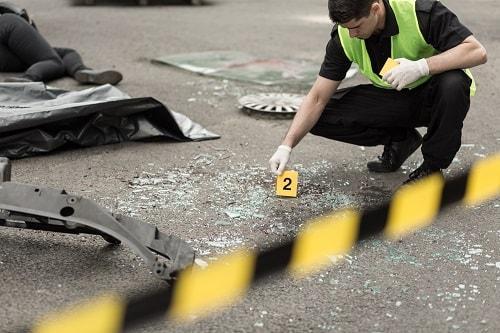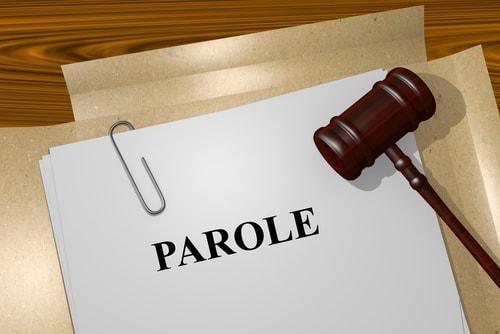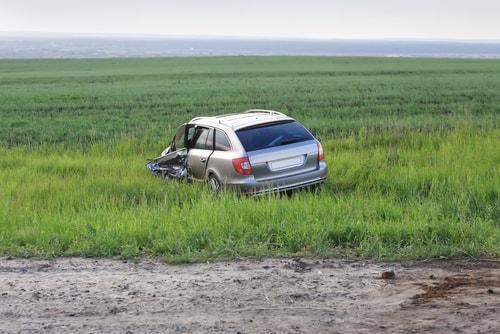Recent Blog Posts
Understanding Assault Charges in Connecticut
 When you hear a news report or a read a newspaper article that refers to a violent crime, it is not uncommon to encounter the word “assault.” Depending on the circumstances of the offense and the jurisdiction, the word may be used in conjunction with the term “battery”—as in the “The suspect was arrested and charged with assault and battery.” But, what does assault entail? If you are facing charges for assault in Connecticut, it is important to understand what the law says.
When you hear a news report or a read a newspaper article that refers to a violent crime, it is not uncommon to encounter the word “assault.” Depending on the circumstances of the offense and the jurisdiction, the word may be used in conjunction with the term “battery”—as in the “The suspect was arrested and charged with assault and battery.” But, what does assault entail? If you are facing charges for assault in Connecticut, it is important to understand what the law says.
The first thing you should know is that there is not a separate offense known as “battery” in Connecticut. Almost any situation that involves an injury due to the use of violence, force, or a deadly weapon is categorized as a type of assault. State law provides three degrees of assault which range from Class A misdemeanors up to Class B felonies, and penalties may be increased depending on factors such as the age, condition, disability, or occupation of the victim.
Car Accidents On the Job May Give Injured Victims Options for Compensation
 Every day across the country, thousands of car accidents occur and thousands of victims are injured as a result. When you are hurt in a car accident caused by another driver, you have the right to pursue compensation for your injuries from the at-fault party. But, what happens when you are in a car accident while on company time or in a company vehicle? While such situations may become more complicated than “normal” car crashes, if you are injured while driving a company car on the job, you may have additional avenues for collecting the compensation you need to put your life back on track.
Every day across the country, thousands of car accidents occur and thousands of victims are injured as a result. When you are hurt in a car accident caused by another driver, you have the right to pursue compensation for your injuries from the at-fault party. But, what happens when you are in a car accident while on company time or in a company vehicle? While such situations may become more complicated than “normal” car crashes, if you are injured while driving a company car on the job, you may have additional avenues for collecting the compensation you need to put your life back on track.
Third-Party Lawsuit vs. Workers’ Compensation
The Connecticut workers’ compensation program is designed to provide benefits for employees injured in the course of performing their jobs. In most cases, workers are eligible for workers’ compensation benefits regardless of who was at fault for their injuries. The workers’ compensation system also prevents most lawsuits filed by injured workers against their employers. Workers’ compensation benefits generally cover medical expenses, lost wages, and vocational retraining for employees who cannot return to their previous jobs.
The Problems With Courtroom Identification
 It is one of the basic tenets of American criminal law: a person charged with a crime has the right to face his or her accuser. In a criminal case, the accuser is usually the state or the federal government but the so-called “confrontation clause” of the Sixth Amendment to the Constitution guarantees a criminal suspect the right to confront any witnesses against him or her as well. The provision was intended to prevent a defendant from being convicted on the basis of testimony or written evidence without the ability to challenge the witnesses’ statements in front of a jury.
It is one of the basic tenets of American criminal law: a person charged with a crime has the right to face his or her accuser. In a criminal case, the accuser is usually the state or the federal government but the so-called “confrontation clause” of the Sixth Amendment to the Constitution guarantees a criminal suspect the right to confront any witnesses against him or her as well. The provision was intended to prevent a defendant from being convicted on the basis of testimony or written evidence without the ability to challenge the witnesses’ statements in front of a jury.
When a witness appears to testify during a trial, prosecutors also have the opportunity to question him or her. Depending on the situation and the type of witness, it has long been a common practice for prosecutors to ask a witness if the person who committed the crime in question is present in the courtroom. The witness then points at the defendant and says something to the effect of “That’s him [or her].” It is intended to be a dramatic moment that hits home with the jurors.
Accident Reconstruction Key to Settlement for Crash Victims’ Family
 When a crime is committed and law enforcement agencies are not exactly sure how the incident occurred, they will often look to experts to help reconstruct the crime scene and determine exactly what happened. These experts use the available evidence combined with a knowledge of science, mathematics, and human behavior to develop an understanding of what took place and, in many cases, certain characteristics about the suspect.
When a crime is committed and law enforcement agencies are not exactly sure how the incident occurred, they will often look to experts to help reconstruct the crime scene and determine exactly what happened. These experts use the available evidence combined with a knowledge of science, mathematics, and human behavior to develop an understanding of what took place and, in many cases, certain characteristics about the suspect.
The same can be done in auto accident situations when investigators are unclear on what happened and which driver was at fault for the crash. Auto accident reconstruction experts rely on physical evidence, information from the vehicles’ event data recorders, and eyewitness reports to determine which vehicles did what and who may be to blame. Thanks to the help of accident reconstructionists, the family of a man killed in last year in a North Canaan crash was able to claim a $5.3 million settlement from the at-fault party.
Parole Does Not Mean Complete Freedom
 Last week, one of America’s most famous inmates captured the attention of the nation once again—just as he had 40-plus years ago on the football field and 22 years ago in arguably the most publicized criminal trial in our country’s history. This time, O.J. Simpson was up for parole after serving nine years in prison for armed robbery in 2007. The hearing was televised, and millions watched as the four-person parole board announced that Simpson will be released on parole later this year. For many, it may seem surreal that former football star will be going free, but it is important to understand that parole is not the same thing as full freedom.
Last week, one of America’s most famous inmates captured the attention of the nation once again—just as he had 40-plus years ago on the football field and 22 years ago in arguably the most publicized criminal trial in our country’s history. This time, O.J. Simpson was up for parole after serving nine years in prison for armed robbery in 2007. The hearing was televised, and millions watched as the four-person parole board announced that Simpson will be released on parole later this year. For many, it may seem surreal that former football star will be going free, but it is important to understand that parole is not the same thing as full freedom.
What Is Parole?
Parole is often confused with probation, and while the two are similar in some ways, they are very different things. Probation is typically used as an alternative to a prison sentence for relatively minor offenses. Some offenders may also receive probation in addition to a short period of incarceration. Individuals on probation serve their sentences while living in the community and under the supervision of probation officers. The court often sets strict conditions of probation and if those conditions are violated, the offender risks being sent to jail.
Two Convicted for Fake Car Accident Fraud Scheme
 When you are involved in a car accident, it is common to be left feeling confused, uncertain, and overwhelmed. If you are injured, things may seem even worse. Accident victims often rely on their insurance companies to help them with the financial aspects of recovery and getting the money they need to put their lives back together. In some cases, however, it is the insurance company that is the victim, and the ramifications can be extremely serious.
When you are involved in a car accident, it is common to be left feeling confused, uncertain, and overwhelmed. If you are injured, things may seem even worse. Accident victims often rely on their insurance companies to help them with the financial aspects of recovery and getting the money they need to put their lives back together. In some cases, however, it is the insurance company that is the victim, and the ramifications can be extremely serious.
Dozens of Staged Crashes
Last month, a federal jury in New Haven handed down a conviction for two men charged with fraud and conspiracy related to a string of staged car accidents between 2011 and 2016 in and around Norwich. Four other men pleaded guilty last August. The men were part of a ring that swindled hundreds of thousands of dollars from various insurance companies by staging car crashes and then filing insurance claims for damages and bodily injuries.
Conviction Now Required for Asset Forfeiture in Connecticut
 It is rare for lawmakers from opposing parties to completely agree on a particular topic. When they do, the correct path is often so glaringly obvious that it transcends party lines and truly promotes the common good. Such was the case earlier this year when a bill regarding the forfeiture of assets seized in criminal investigations was put to a vote in the Connecticut legislature. In both the House and Senate, the measure was passed unanimously, and earlier this week, Governor Dannel P. Malloy signed the bill into law. The new law looks to protect the rights of citizens by requiring a conviction before the government can permanently confiscate a person’s assets and property.
It is rare for lawmakers from opposing parties to completely agree on a particular topic. When they do, the correct path is often so glaringly obvious that it transcends party lines and truly promotes the common good. Such was the case earlier this year when a bill regarding the forfeiture of assets seized in criminal investigations was put to a vote in the Connecticut legislature. In both the House and Senate, the measure was passed unanimously, and earlier this week, Governor Dannel P. Malloy signed the bill into law. The new law looks to protect the rights of citizens by requiring a conviction before the government can permanently confiscate a person’s assets and property.
Understanding Asset Forfeiture
Private assets are often seized by law enforcement and government entities when a person is arrested on criminal charges. If the assets are deemed to be related to criminal activity, the government may look to keep them permanently either as part of the criminal proceedings or in a separate matter in civil court. Prior to the passage of the new law, however, civil asset forfeiture did not require the property owner to be convicted first. Estimates suggest that Connecticut police departments and prosecutors generated nearly $18 million in asset forfeiture between 2009 and 2016, with nearly two-thirds coming from civil proceedings without requiring a conviction.
Court Rules Accident Exacerbated Victim’s Pre-Existing Condition
 If you have ever been in an auto accident, you probably felt the effects of the crash for days or even weeks after the fact. Car accidents, obviously, can cause serious injuries such as broken bones, lacerations, spine and neck injuries, and head trauma. But what if you had already been diagnosed with a particular condition and your accident made your pre-existing condition worse? Should you be entitled to recover the costs of treating the new version of an old condition? This exact question was recently put before a jury in Middletown Superior Court.
If you have ever been in an auto accident, you probably felt the effects of the crash for days or even weeks after the fact. Car accidents, obviously, can cause serious injuries such as broken bones, lacerations, spine and neck injuries, and head trauma. But what if you had already been diagnosed with a particular condition and your accident made your pre-existing condition worse? Should you be entitled to recover the costs of treating the new version of an old condition? This exact question was recently put before a jury in Middletown Superior Court.
A Summary of Facts
In August of 2014, a man from Old Saybrook, Connecticut, was driving on a road in Cape May County, New Jersey when he came to a stop in a line of traffic. Without warning, his vehicle was struck from behind by another car, throwing him violently forward. The driver of the second vehicle was found to be at fault for the crash, but her bodily injury liability coverage maxed out at $15,000—an amount insufficient to cover the Connecticut man’s injuries.
Governor Malloy Signs Bail Reform Measure
 Over the last several years, Connecticut Governor Dannel P. Malloy has been at the forefront of criminal justice reform. He has championed a series of measures to create what he has called a “Second Chance Society,” which focuses on educating and rehabilitating criminal offenders rather than jumping right into severe punishments. Most of the Second Chance Society efforts have been directed toward helping low-level, non-violent offenders. Recently, however, Governor Malloy turned his attention to those who have not yet been tried or convicted, as he sought to improve the state’s bail system and reduce the population of local and county jails.
Over the last several years, Connecticut Governor Dannel P. Malloy has been at the forefront of criminal justice reform. He has championed a series of measures to create what he has called a “Second Chance Society,” which focuses on educating and rehabilitating criminal offenders rather than jumping right into severe punishments. Most of the Second Chance Society efforts have been directed toward helping low-level, non-violent offenders. Recently, however, Governor Malloy turned his attention to those who have not yet been tried or convicted, as he sought to improve the state’s bail system and reduce the population of local and county jails.
Pretrial Justice
When a person is arrested on suspicion that he or she committed a crime, the suspect must often wait several days before he or she is brought before a judge for an arraignment. In the meantime, many defendants are forced to sit in jail because they cannot afford to pay cash bail. The wait is often much longer between arraignment and trial. Even a few days in detention, however, can be problematic for low-income individuals, as they may be forced to miss work. The resulting instability can ultimately lead to a cycle of criminal behavior.
Assumption of Risk by Fans at a Sporting Event
 With the exception of a WNBA franchise that plays its home games at the Mohegan Sun in Uncasville, Connecticut has not had a top-level professional sports team to call its own since the NHL’s Hartford Whalers moved to North Carolina in 1997. The state, however, is still home to a number of minor league teams in both baseball and hockey. For many residents, it is also fairly easy to travel to New York to catch a Yankees or Mets game on a warm, summer evening. Amidst the peaceful ambience, certain dangers still exist, as spectators are often at risk for being struck by a ball or bat during the course of a game.
With the exception of a WNBA franchise that plays its home games at the Mohegan Sun in Uncasville, Connecticut has not had a top-level professional sports team to call its own since the NHL’s Hartford Whalers moved to North Carolina in 1997. The state, however, is still home to a number of minor league teams in both baseball and hockey. For many residents, it is also fairly easy to travel to New York to catch a Yankees or Mets game on a warm, summer evening. Amidst the peaceful ambience, certain dangers still exist, as spectators are often at risk for being struck by a ball or bat during the course of a game.
With the potential for injury being so prominent, it is reasonable to wonder why there are not more high-profile lawsuits filed against sports teams and the venues in which they play. Sports spectator lawsuits are not very common because of an important element that is inherent to attendance for most fans: the voluntary assumption of risk.






